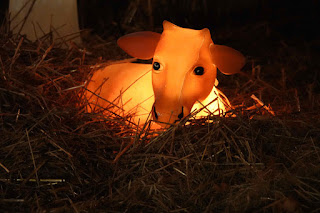“Fairy tales intimate that a rewarding, good
life is within one’s reach despite adversity – but only if one does not shy
away from the hazardous struggles without which one can never achieve true
identity. These stories promise that if a child dares to engage in this
fearsome and taxing search, benevolent powers will come to [their] aid, and
[they] will succeed.”
- Bruno Bettelheim, The Uses of Enchantment:
The Meaning and
Importance of Fairy Tales
(Vintage Books Edition, 2010; originally
published in 1975), page 25.
Bruno
Bettelheim was a flawed genius. The American psychoanalyst was born in Austria
in 1903 and died – by his own hand – in 1990. He taught psychology at the
University of Chicago from 1944 to 1973. The above quotation comes from his book,
The Uses of Enchantment: The Meaning and
Importance of Fairy Tales, in which he applied Freudian psychology to fairy
tales. After his death, he was found to have faked credentials and plagiarized
passages in his books. His controversial views on autism are now discredited.
But...and...his
theories about the importance of fairy tales in the emotional development of
young people are still valid, and he had a major impact on my approach to teaching
Drama. In a nutshell, he believed that when children fully enter the life of a
fairy tale, they live the story as if they are the heroes, conquering monsters,
evil, and – most importantly – their own fears. For Bettelheim, this self-imagining
of the child as hero in a fearsome story provided children with vital
experiences in the creation of agency, resilience, and morality. Pretty
impressive outcomes, yes?
The fairy
tales he references, however, are not the saccharine versions that come from
the Disney studios. They are, instead, earlier versions where children are not
shielded from the violent realities of life. I encourage you to check out the
harsher versions of “Hansel and Gretel,” “Little Red Riding Hood,” “The
Sleeping Beauty,” “The Little Mermaid,” and “Cinderella” to see how much the current
sanitized versions have diluted their original nastiness and made them less
useful as vehicles for a child’s heroic journey.
In teaching
Drama, I used Bettelheim’s theories to frame the Grade 8 monologue unit. Each
student created a character of her own choosing and then presented a prepared
but unscripted monologue based on that character. I censored neither the
characters nor their life circumstances. For over a decade, this monologue unit
was at the heart of the Grade 8 Drama course. And what amazing characters the
students chose! The majority dove deeply into serious behavioural issues,
tragic life circumstances, and bravery in the face of adversity. Not only were
the monologues compelling theatre, they were also living proof of Bettelheim’s
theories: these students were imagining themselves into the nastiness of life –
and emerging victorious at the end.
Bettelheim’s
theories helped me understand what was happening – and they also helped me
explain the process to the parents, some of whom were worried that their
daughters were exploring the harshness of human existence. By reassuring the
parents that their daughters were, in fact, engaged in age-appropriate
behaviour, I not only calmed fears, but I also supported the emotional journeys
upon which these students were embarked. If they had been experiencing such
challenges in their real lives, the parents would have been right to worry.
Instead, the explorations took place in the safety of the Drama Studio,
surrounded by emotional support. They were ‘playing’ in the very best sense of
that word. And they were living proof of Bettelheim’s theories. Mind you, I
never started the Grade 8 course with the monologue unit. It came at the end of
the course after I had spent weeks trying to create a level of trust that
supported such risk taking.
It was a
peak experience in my teaching career. And I blame Bruno Bettelheim for giving
me the faith that it was worth doing.
The photos:
at this time of year, our neighbourhood is full of colourful – enchanting – Christmas
light displays. Many children will look at them with glee and wonder. However,
I went searching for something else in the displays: the ominous bits hidden
amongst all the gaiety. The bits that invited a child into an imaginary tale of
self-discovery.
Some of these
photos are pretty creepy. You may not like them. In any case, they’re all part
of the heroic journey that Bettelheim encouraged us to undertake.









What a gift for teaching you have, Larry. How fortunate were the young women who grew into in Grade 8 Drama under your direction.
ReplyDelete